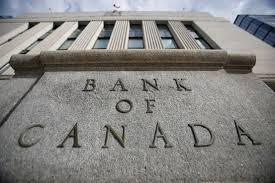
The Bank of Canada, as the country's financial core, has been striving to maintain financial stability and promote economic growth. However, in recent years, with the complex and ever-changing global economic situation, the Bank of Canada has also faced unprecedented multiple risks.
It can be seen that for several months, the Bank of Canada has been trying to find a way out: to slow down economic growth and bring inflation back under control, without causing an economic recession. This week, the central bank presented a large amount of evidence in a report to prove that its strategy is working. Inflation has eased, economic growth has resumed, and wages are also recovering. But the bank also listed a series of factors that could quickly hinder this process, from mortgage renewals to population dynamics, to foreign conflicts or Canada's wildfires. In the past two years, rising prices and rising borrowing costs have dealt a heavy blow to Canadian households. People can easily see that inflation has eased and believe that the future will be better. Most forecasts indicate that the economy is expected to improve for the remainder of this year. But the real risks still exist, and the central bank will pay attention to these risks when announcing whether to cut interest rates again in July.
Firstly, among the economic growth risks listed by the bank, the first one is the imminent mortgage loan renewal tsunami that will have an impact on the economy. The Bank of Canada wrote in its review summary, "By 2025, a large number of households renewing mortgage loans at higher interest rates and repayment amounts may curb spending and more severely suppress economic activity and inflation than expected." The summary aims to provide Canadians with a deeper understanding of the central bank's monetary policy decisions. At the same time, the central bank is concerned that interest rate cuts may lead to overheating in the real estate market. Economists warn that the slowdown in the real estate market has led to suppressed real estate demand across the country.
Secondly, another key issue is how the economy can adapt to population growth. New data released this week shows that the population of Canada exceeded 41 million in the first quarter of 2024, compared to less than a year when the population reached 40 million last summer. Statistics Canada states that almost all growth comes from international migration. These new immigrants have contributed to economic growth. They buy groceries, cars, and household items. However, despite this, GDP growth has been hovering around zero for several months. If calculated based on per capita GDP, the economic situation is undoubtedly worse. The federal government has stated that it will slow down restrictions on the number of non permanent residents entering the country. This will inevitably change one of the driving forces behind Canada's barely sustained economic growth. The bank wrote, "The timing and impact of the government's plan to slow down the rapid growth of non permanent residents may affect inflation and growth forecasts." Like everything else in the current economy, these changes are also full of contradictions. The strong population growth has promoted economic growth, but it has also pushed up housing costs, especially rent.
Furthermore, since the start of interest rate hikes in March 2022, the Bank of Canada has been warning of excessive or insufficient tightening risks. In other words, it is concerned that if interest rates are raised too high, it will cause unnecessary damage to the economy. But if the interest rate hike is not strong enough, inflation will continue to soar. However, Managing Director Benjamin Reyes stated that measuring this risk during the interest rate hike cycle is almost an impossible task. Reitz stated that interest rate changes typically take 18 months to fully impact the economy. But he expects the data for the next few months to match the forecast. He said that if this happens, Canadians can expect more interest rate cuts in the coming months. The market has already digested the expectation of three interest rate cuts this year. Some people believe that the central bank will cut interest rates even more.
Overall, the Bank of Canada faces multiple risks. In order to maintain financial stability and promote economic growth, the central bank needs to closely monitor the changing trends of these risks and take corresponding measures to respond. At the same time, the central bank also needs to strengthen cooperation with other countries to jointly address global economic risks.

On September 11 (local time), data released by the U.S. Bureau of Labor Statistics showed that the U.S.
On September 11 (local time), data released by the U.S. Bur…
At noon local time on September 10th, Charlie Kirk, a well-…
On September 9th local time, Blackstone Group (BX.N) and Pe…
In March 2025, US President Trump made a high-profile annou…
Recently, according to a report from Singapore (Reuters), t…
Recently, the European Central Bank announced that it will …